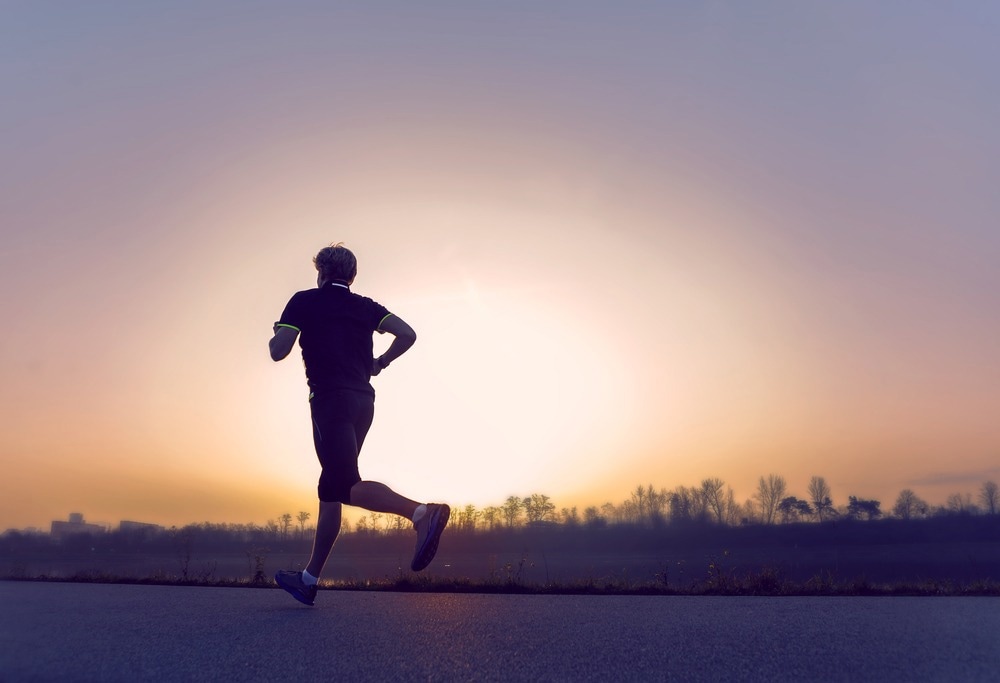The advantage of being physically active is well documented in its protective effects against obesity, specifically moderate-to-vigorous physical activity (MVPA). A new paper in Obesity explores the diurnal relationship of obesity to MVPA – at what time does MVPA pay off the most in preventing obesity?
 Study: The diurnal pattern of moderate-to-vigorous physical activity and obesity: a cross-sectional analysis. Image Credit: Soloviova Liudmyla/Shutterstock.com
Study: The diurnal pattern of moderate-to-vigorous physical activity and obesity: a cross-sectional analysis. Image Credit: Soloviova Liudmyla/Shutterstock.com
Links between circadian rhythm, activity, and health
MVPA for 30 minutes five times a week is negatively linked to obesity, and obesity puts the person at risk for many other chronic diseases and premature death. Obesity rates are galloping upwards worldwide. Physical activity and other lifestyle and dietary modifications are encouraged as one way to manage body weight.
Recent evidence from epidemiological studies shows that people who were less active in the morning were more likely to become obese, but this is not a universal finding. There is a need to clarify this aspect as the human body displays rhythms of metabolic and other physiological activity that coordinate with the cycle of day and night.
Energy metabolism is a key area affected by obesity, and it shows multiple correlations with the circadian rhythms of the body. The body clock controls the metabolism of glucose and fat breakdown as well as build-up, along with insulin sensitivity. This regulation is disrupted by drastic shifts in the activity cycle relative to the diurnal cycle and often manifests as ill health.
Thus, obesity and metabolic disease are more common in shift workers. The authors of the study state, “The evidence implies that doing the right thing at the right time could be important for maintaining a healthy metabolism and a healthy body weight.”
Earlier, it has been demonstrated that exercising in the morning after fasting overnight increases the breakdown of fat better than evening exercise. This could be due to the increased use of stored liver glycogen, leading to decreased glycogen reserves that trigger fat oxidation. Moreover, the overnight fast period preceding morning exercise may reduce the overall energy intake more than exercise after eating.
The current study looked at how the timing of exercise, the intensity of which was measured using an accelerometer, was related to obesity.
What did the study show?
The study included over 5,000 participants with data from the National Health and Nutrition Examination Survey (NHANES). They were categorized by the time of exercise. The morning exercise group was older than the midday and evening exercise groups and had the most women.
The morning group tended to be more sedentary and less active than the others, but among those who were active, the MVPA was comparable to that of participants in the other groups. Most of their MVPA occurred between 7–9 a.m.
Conversely, the MVPA was 40% higher in the evening and midday groups than in the morning exercise group, considering only those who did not fulfill MVPA. Peak MVPA in these groups occurred between 11 a.m.-1 p.m. and 5–8 p.m., respectively.
The morning group also ate healthier food in healthier proportions and with less energy content overall. Their body mass index (BMI) and waist circumference (WC) were both lower than in the other two groups after compensating for multiple factors, including age, sex, racial group, tobacco and alcohol use, MVPA amount, and sedentary behavior.
The researchers found that MVPA in the morning was strongly associated with a linear dose-dependent reduction in obesity rates. A weaker association was found between midday and evening MVPA and obesity, with a curvilinear pattern where the BMI and WC plateaued beyond 150 minutes of MVPA per week, which is the recommended duration. This was not affected by dietary patterns.
Among the subgroups that met MVPA criteria, the average BMI was 25.9 for the morning group vs. 27.6 and 27.2 for midday and evening exercise, respectively. For the whole group, these values were 27.4, 28.4, and 28.2, respectively, showing the expected lack of impact of exercise timing if the amount of MVPA is too low.
The WC also showed the same diurnal pattern, with the lowest mean WC of 91.5 cm in the morning MVPA-eligible group, compared to 95.8 and 95 in the other two groups, respectively. For the whole group, as with the BMI, there were no significant changes between groups, with the WC being 95.9 vs. 97.9 and 97.3, respectively.
People who exercised enough to meet MVPA guidelines in the morning were lighter and had a lower WC than similarly exercising people in the other two groups, irrespective of dietary and total activity patterns.
What are the implications for time-dependent physical activity?
According to the authors, the study demonstrates how “the diurnal pattern of MVPA influences the association between MVPA and obesity.” This could be used to plan better weight management, pending further studies to validate the association. Some possible reasons could be the combination of increased energy expenditure and lower energy intake in the mornings or perhaps greater adherence to the exercise regimen in this group.
The importance of healthy eating cannot be dismissed as a confounding factor in this study, as the diet-adjusted BMI and WC values varied more widely between the morning group and the other two, with the greatest difference being observed among those who met MVPA guidelines.
Interestingly, the BMI and WC outcomes favored morning exercise even though this group was more sedentary than the other two. A 2016 study using over a million participants showed that “high levels of physical activity can substantially reduce the detrimental association between sedentary behavior and health outcomes.” This could help office workers and other sedentary populations to improve their obesity risk.
This was a small study. If randomized controlled trials show prospective proof that the timing of exercise affects its impact on obesity, MVPA between 7-9 a.m. could be the most beneficial in terms of preventing obesity, including among those who are sedentary for much of the time.